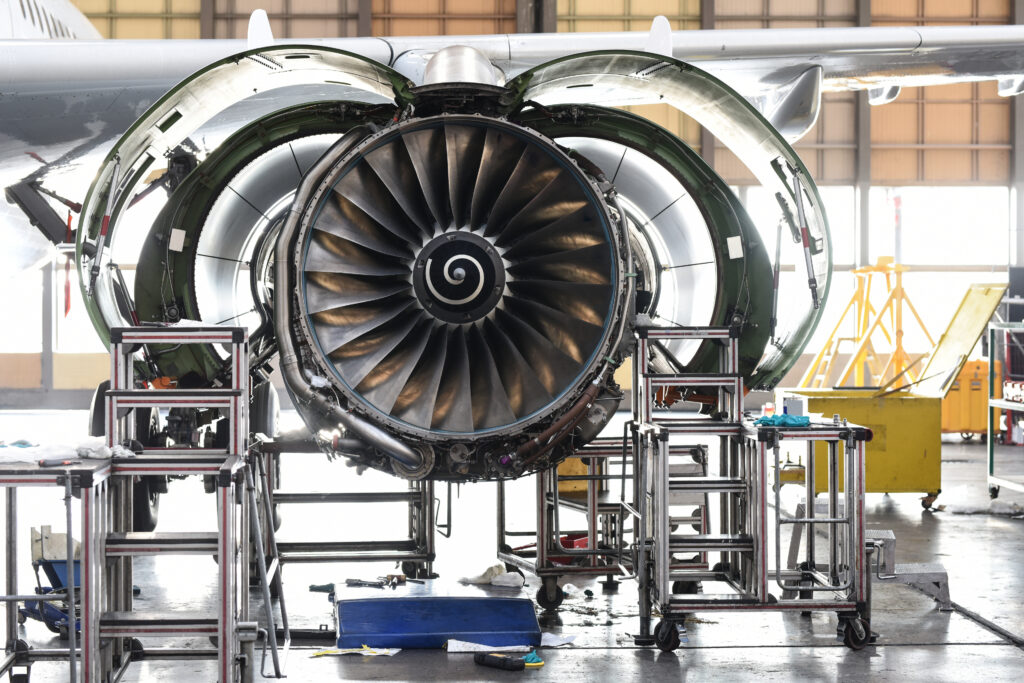
Fasteners might not be the most glamorous part of an aircraft — but they’re everywhere, and they matter. From wings to engine housings, thousands of tiny components hold each structure together. And when you’re flying at 35,000 feet, every gram of weight, every bump in the airflow and every choice of material adds up.
Fuel efficiency isn’t just about engines and aerodynamics. It starts at the fastening point.
Small Parts, Big Impact
It’s easy to underestimate just how many fasteners go into an aircraft. Tens of thousands, each playing a role in how the aircraft moves, holds together and performs under pressure. Traditional steel options can get the job done — but they come at a cost: weight.
More weight means more fuel. Over the lifetime of a commercial aircraft, those extra grams turn into tonnes of fuel and millions in operating costs. That’s why lightweight fastening solutions are now standard for modern aerospace builds. Materials like titanium and aluminium alloys offer the strength needed for safety and compliance, but with far less weight to carry.
Looking to reduce weight without compromising performance?
We can help you specify fasteners that support fuel savings from day one. Contact JP Aero to discuss your project.
Materials That Work Harder (and Smarter)
Fastener materials are doing more heavy lifting than ever — figuratively and literally. Fuel-saving fastener materials like titanium are corrosion-resistant, strong and reliable in high-stress environments, from fuselage joins to wing spars. Aluminium, on the other hand, is ideal for areas where high strength isn’t critical but low weight is.
Both help reduce the overall mass of the aircraft without compromising performance — meaning less fuel burn, longer range and lower emissions. In aviation, that’s a win across the board.
Aerodynamics at the Fastening Level
Fuel isn’t just burned because of weight — drag plays a huge role. That’s where aerodynamic fastening comes in. Every exposed bolt head, every protruding fastener, interrupts airflow. It might not seem like much, but across the surface of a jet, the cumulative drag can be significant.
Using flush, countersunk or low-profile fasteners preserves the integrity of the aircraft’s outer skin. It keeps the airflow smooth, reduces turbulence and helps minimise resistance. And when you’re chasing efficiency, shaving off even a few percent in drag can translate into real-world savings.
Built to Withstand, Built to Perform
Aircraft fasteners don’t get an easy ride. They deal with vibration, pressure shifts, thermal changes and mechanical stress — often all at once. Take the wing-to-fuselage joint, for example: fasteners in this area must handle constant flexing during turbulence, dramatic temperature shifts at cruising altitude, and high structural loads during takeoff and landing. In short, they can’t afford to fail — and neither can the materials holding them in place.
This is why high-performance aerospace fasteners are engineered to be both light and tough. The best ones don’t just hold things together; they enhance structural integrity in aerospace applications.
Modern fasteners also support easier maintenance and inspection, especially when traceability is critical. When time on the ground is money lost, being able to trust your components (and service them quickly) becomes a competitive advantage.
The Bigger Picture
Fasteners won’t headline a design review — but they should. The right selection can improve safety, streamline maintenance and reduce operating costs through better fuel efficiency. Whether you’re building something new or retrofitting an existing fleet, optimising your fastener strategy isn’t a small detail — it’s smart engineering.
Looking to improve performance from the inside out?
At JP Aero, we supply custom fasteners built for the demands of modern aerospace — lightweight, aerodynamic and made to last. Talk to us today about your next project.
